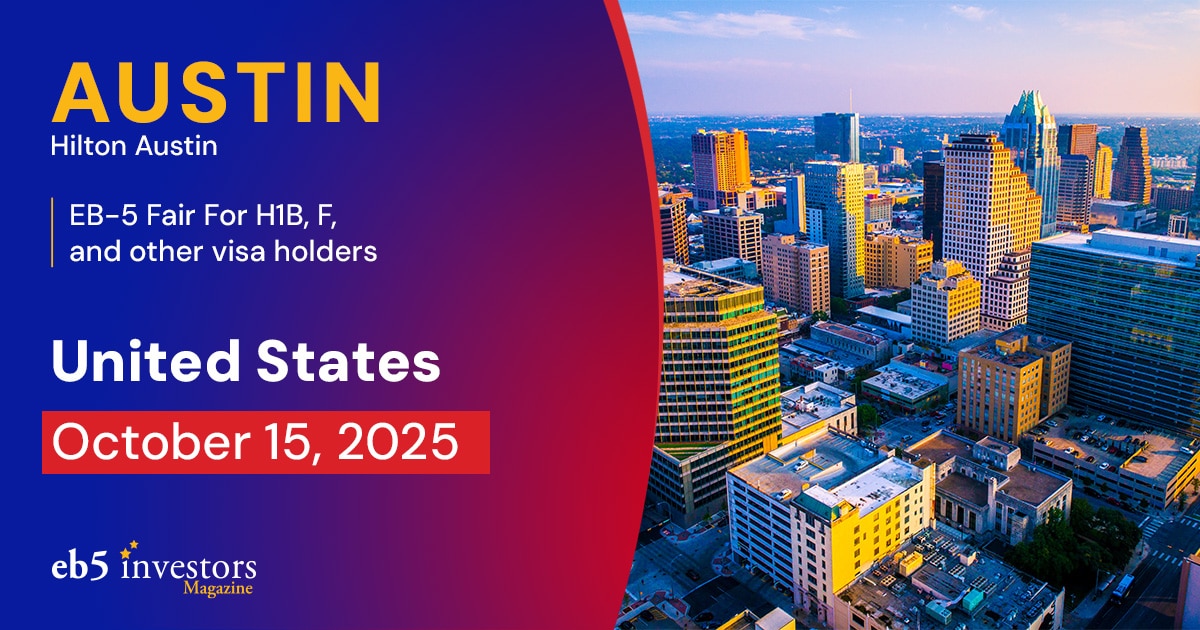
By Anayat Durrani
The U.S. Citizenship and Immigration Services has postponed its publication of a final rule to raise filing fees for immigration applications and petitions until March 2024.
“I think the postponement of the fee hike is USCIS’s reaction to the comments they received from the industry stakeholders,” says Marko Issever, Chief Executive Officer, America EB5 Visa, LLC.
The USCIS published its proposed fee schedule in January. It announced steep increases for several employment-based immigration petitions and applications. For EB-5 investors, the proposed fee hike is set to rise by 204% to $11,160, a dramatic increase from $3,675.
News of the fee hike early in the year brought strong reactions and criticism from the EB-5 community.
“Given the backlogs in processing and the ever-increasing number of complaints we are all receiving from our clients, that reaction is understandable,” says Issever. “However, given inflation and how long it has been since USCIS’s last adjustment of fees, we believe they are justified in wanting to increase them.”
Why is USCIS raising fees for EB-5 applications?
The last time USCIS adjusted its fees was in December 2016. The proposed fees would represent a 40% overall weighted average, compared with 21% in 2016.
“The issue is not the increase, but what they will do once the fees increase. Understandably, the industry is looking for hardcore evidence for improvement in processing times, response to inquiry times, etc.,” says Issever. “Their reaction, therefore, is not because they believe the increase is unjustified. They do not trust that once they increase the fees, USCIS will eliminate or, at least, significantly reduce the unprecedentedly long processing times we have been experiencing.”
The agency has called the fee hike necessary to “recover its operating costs, re-establish and maintain timely case processing, and prevent the accumulation of future case backlogs.” USCIS receives about 96 % of its funding from filing fees as it does not rely on congressional funding.
“There has to be a middle ground. For example, in the EB-5 space, we have suggested, in the past, that USCIS calculate how many man/hours they need to clear the backlog,” says Issever. “There is no justification for an I-526 petition adjudication to take almost five years. Removal of conditions application, I-829, is taking 66 months or more.”
Issever says once USCIS calculates the total cost of backlog clearing, raising the fees for future applications could cover the extra cost. He adds that the agency could hire temporary skilled consultants to help process the outstanding applications with the projected additional revenue.
Why does USCIS still have long EB-5 processing times?
The COVID-19 pandemic greatly impacted the agency’s immigration processing and revenue.
After conducting a comprehensive biennial fee review, the USCIS said its costs have grown since the last fee adjustment due to expanded humanitarian programs, higher demand, increased processing times, and a need for additional USCIS employees.
“These costs have to be borne by somebody. Congress could provide some relief through the budgeting process, but the applicants who are the ultimate beneficiaries of this process have to pitch in. Otherwise, these processing times will only continue to get worse, a result none of us wants,” says Issever.
The American Immigration Lawyers Association and the American Immigration Council in March have jointly criticized USCIS for failing to fulfill their promises to stakeholders, considering that the agency reported processing times of several years for many of its provided services.
“We believe any request to increase fees for these unkept promises must incorporate significant process improvements and specific implementation timelines that fundamentally change the existing paradigm of slow and inefficient service,” the joint statement said.
What will happen with the EB-5 fees in the future?
Whether the final rule will include the fee hikes proposed in January or be revised per comments received remains to be seen.
Meanwhile, the USCIS will celebrate this July Fourth by welcoming more than 5,500 new citizens in more than 180 naturalization ceremonies between June 30 and July 7. The USCIS welcomed 974,000 new U.S. citizens in fiscal year 2022. So far in 2023, the agency has received 588,900 new U.S. citizens as of June 7, and says it has made significant progress in reducing naturalization pending queues.
USCIS Director Ur M. Jaddou called Independence Day an opportunity to reaffirm the agency’s commitment to its mission of “promoting citizenship and making the naturalization process accessible to all eligible are a beautiful extension of many ideals that birthed our nation 247 years ago.”
DISCLAIMER: The views expressed in this article are solely the views of the author and do not necessarily represent the views of the publisher, its employees. or its affiliates. The information found on this website is intended to be general information; it is not legal or financial advice. Specific legal or financial advice can only be given by a licensed professional with full knowledge of all the facts and circumstances of your particular situation. You should seek consultation with legal, immigration, and financial experts prior to participating in the EB-5 program Posting a question on this website does not create an attorney-client relationship. All questions you post will be available to the public; do not include confidential information in your question.








